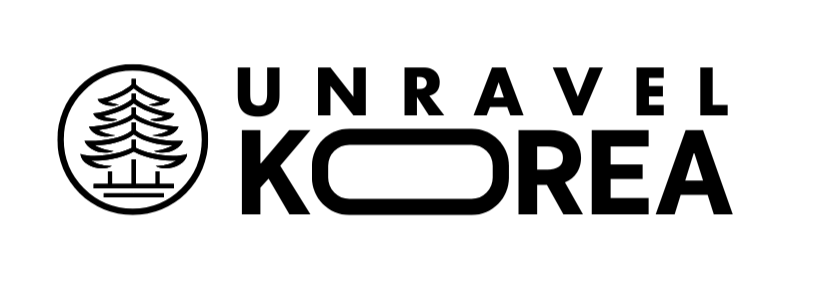Seoraksan National Park stands as one of South Korea’s most breathtaking natural destinations, offering dramatic mountain landscapes, ancient temples, and pristine wilderness just hours from Seoul. The park is located in the northeastern part of South Korea, primarily in Gangwon Province.
The park spans across Sokcho, Inje, and Goseong counties, with the main entrance situated near Sokcho city on the east coast. At 1,708 meters above sea level, Mount Seorak (Seoraksan) is the third-highest mountain in South Korea and the centerpiece of this UNESCO Biosphere Reserve.
This comprehensive guide covers everything you need to know for an unforgettable visit to Korea’s crown jewel of national parks.
How to Get to Mt. Seorak from Seoul
By Express Bus (Recommended)
Route: Seoul → Sokcho → Seoraksan
- Departure: Seoul Express Bus Terminal (Gangnam)
- Duration: 2.5-3 hours to Sokcho
- Cost: 15,000-20,000 KRW one way
- Frequency: Every 30-60 minutes
From Sokcho Bus Terminal:
- Take local bus 7 or 7-1 to Seoraksan National Park entrance
- Journey time: 20-30 minutes
- Cost: 1,370 KRW
By KTX + Bus
- KTX: Seoul → Jinbu Station (1.5 hours)
- Bus: Jinbu → Seoraksan (1 hour)
- Total time: 3-3.5 hours
- Cost: 35,000-45,000 KRW
By Car
- Duration: 2.5 hours from Seoul
- Route: Seoul → Chuncheon → Inje → Seoraksan
- Parking: Available at park entrance (3,000 KRW/day)
Essential Park Information
Seoraksan National Park Opening Hours
- Peak Season (Mar-Oct): 5:00 AM – 6:00 PM
- Off Season (Nov-Feb): 6:00 AM – 5:00 PM
- Cable car hours: 8:30 AM – 5:30 PM (varies by season)
Seoraksan National Park Entrance Fee
- Adults: 3,500 KRW
- Teenagers (13-18): 1,000 KRW
- Children (7-12): 500 KRW
- Seniors (65+) and children under 6: FREE
Seoraksan Cable Car Information
- Adult round trip: 11,000 KRW
- Adult one way: 8,000 KRW
- Children round trip: 8,500 KRW
- Duration: 10 minutes each way
- Destination: Gwongeumseong Fortress area
- Operating: Daily (weather permitting)
Seasonal Guide to Seoraksan National Park
Seoraksan National Park Autumn (September-November)
Peak foliage: Mid to late October
Autumn is arguably the best time to visit Seoraksan, when the mountains explode in brilliant reds, oranges, and golds. The fall colors typically peak around mid-October, creating one of Korea’s most spectacular natural displays.
What to expect:
- Stunning fall foliage photography opportunities
- Comfortable hiking temperatures (10-20°C)
- Clear mountain views
- Crowded weekends – plan accordingly
Seoraksan National Park Winter (December-February)
Winter transforms Seoraksan into a snow-covered wonderland, offering a completely different but equally beautiful experience.
What to expect:
- Snow-covered peaks and frozen waterfalls
- Ice climbing opportunities
- Fewer crowds
- Cold temperatures (-10 to 5°C)
- Some trails may be closed due to ice
- Cable car operations weather-dependent
Spring (March-May) and Summer (June-August)
- Spring: Cherry blossoms and fresh green landscapes
- Summer: Lush vegetation, waterfalls at full flow, but can be hot and humid
Here you can explore more attractive Bukhansan national park, Seoul forest park, Haneul park Seoul and Yeouido Hangang park
Major Attractions and Hiking Trails
Gwongeumseong Fortress
Accessible via the Seoraksan cable car, this ancient mountain fortress offers:
- Hiking time from cable car station: 20-30 minutes
- Altitude: 800 meters
- Views: Spectacular panoramic mountain vistas
- Historical significance: Goryeo Dynasty fortress ruins
Popular Hiking Trails and Duration
Sinheungsa Temple Trail (Easy)
- Distance: 1.5 km one way
- Duration: 30-45 minutes
- Highlights: Historic temple, Bronze Buddha statue
- Difficulty: Easy, suitable for all ages
Ulsanbawi Rock Trail (Moderate-Difficult)
- Distance: 3.8 km one way
- Duration: 3-4 hours round trip
- Elevation gain: 873 meters
- Highlights: Dramatic granite peaks, challenging metal stairways
Daecheongbong Peak (Difficult)
- Distance: 8.2 km one way
- Duration: 8-10 hours round trip
- Elevation: 1,708 meters (highest peak)
- Difficulty: Very challenging, for experienced hikers only
Biryong Falls Trail (Moderate)
- Distance: 2.8 km one way
- Duration: 2-3 hours round trip
- Highlights: Beautiful waterfalls, forest paths
How Long Does it Take to Climb Seoraksan?
The answer depends entirely on your chosen route and fitness level:
- Cable car + Gwongeumseong: Half day (4-5 hours total)
- Sinheungsa Temple + easy trails: Full day (6-7 hours)
- Ulsanbawi Rock climb: Full day (7-8 hours)
- Daecheongbong Peak summit: Very long day (10-12 hours) or overnight
For most visitors, a full day allows for a satisfying experience including major highlights.
Animals of Seoraksan National Park
Seoraksan National Park is home to diverse wildlife, though many species are elusive:
Mammals:
- Korean black bear (very rare, protected)
- Wild boar
- Roe deer
- Korean water deer
- Flying squirrels
- Various bat species
Birds:
- Over 90 bird species recorded
- Korean magpie
- Various eagles and hawks
- Woodpeckers
Note: Wildlife sightings are not guaranteed, and visitors should maintain safe distances from any animals encountered.
Seoraksan National Park Weather
What to Expect
- Spring: Mild temperatures, occasional rain
- Summer: Warm and humid, frequent afternoon thunderstorms
- Autumn: Cool and crisp, perfect hiking weather
- Winter: Cold with snow, temperatures often below freezing
Weather Preparation Tips
- Check weather forecasts before visiting
- Mountain weather changes rapidly
- Bring layers regardless of season
- Waterproof gear recommended
- Winter visits require proper cold weather equipment
Key Areas to Know
- Outer Seorak: Main tourist area with cable car, temples
- Inner Seorak: Remote hiking areas, overnight camping
- South Seorak: Alternative entrance with different trails
Navigation Tips
- Download offline maps before visiting
- Trail markers are in Korean and English
- Visitor centers provide free maps
- GPS can be unreliable in mountain areas
Final Thoughts
Seoraksan National Park offers one of Korea’s most rewarding natural experiences, combining dramatic mountain scenery, cultural sites, and excellent hiking opportunities. Whether you’re seeking challenging mountain climbs, peaceful temple visits, or simply want to experience Korea’s natural beauty, Seoraksan delivers unforgettable memories.

